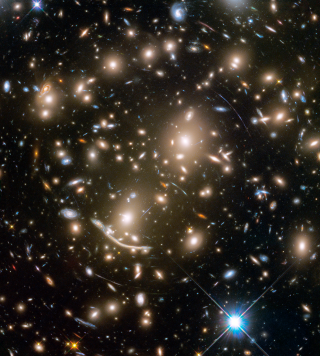Bibcode
Tsatsi, A.; Lyubenova, M.; van de Ven, G.; Chang, J.; Aguerri, J. A. L.; Falcón-Barroso, J.; Macciò, A. V.
Referencia bibliográfica
Astronomy and Astrophysics, Volume 606, id.A62, 10 pp.
Fecha de publicación:
10
2017
Revista
Número de citas
36
Número de citas referidas
34
Descripción
We present new evidence for eight early-type galaxies (ETGs) from the
CALIFA Survey that show clear rotation around their major photometric
axis ("prolate rotation"). These are LSBCF560-04,
NGC 0647, NGC 0810, NGC
2484, NGC 4874, NGC
5216, NGC 6173, and NGC
6338. Including NGC 5485, a known case of
an ETG with stellar prolate rotation, as well as UGC
10695, a further candidate for prolate rotation, we report ten
CALIFA galaxies in total that show evidence for such a feature in their
stellar kinematics. Prolate rotators correspond to 9% of the
volume-corrected sample of CALIFA ETGs, a fraction much higher than
previously reported. We find that prolate rotation is more common ( 27%)
among the most massive ETGs (M∗ ≳ 2 ×
1011M⊙). We investigated the implications of
these findings by studying N-body merger simulations, and we show that a
prolate ETG with rotation around its major axis could be the result of a
major polar merger, with the amplitude of prolate rotation depending on
the initial bulge-to-total stellar mass ratio of its progenitor
galaxies. Additionally, we find that prolate ETGs resulting from this
formation scenario show a correlation between their stellar
line-of-sight velocity and higher order moment h3, opposite
to typical oblate ETGs, as well as a double peak of their stellar
velocity dispersion along their minor axis. Finally, we investigated the
origin of prolate rotation in polar galaxy merger remnants. Our findings
suggest that prolate rotation in massive ETGs might be more common than
previously expected, and can help toward a better understanding of their
dynamical structure and formation origin.
Proyectos relacionados

Evolución de Galaxias en Cúmulos
Las estructuras en el Universo, a todas las escalas de masa, se han formado de una forma jerárquica y principalmente producidas por fusiones de galaxias. Sin embargo, esta formación jerárquica de las galaxias está modulada por el entorno en el cual se crean y evolucionan. Mientras que las galaxias de campo presentan una evolución pasiva, los
Jairo
Méndez Abreu

Huellas de la Formación de las Galaxias: Poblaciones estelares, Dinámica y Morfología
Bienvenida a la página web del g rupo de investigación Traces of Galaxy Formation. Somos un grupo de investigación amplio, diverso y muy activo cuyo objetivo principal es entender la formación de galaxias en el Universo de una manera lo más completa posible. Con el estudio detellado de las poblaciones estelares como bandera, estamos constantemente
Anna
Ferré Mateu